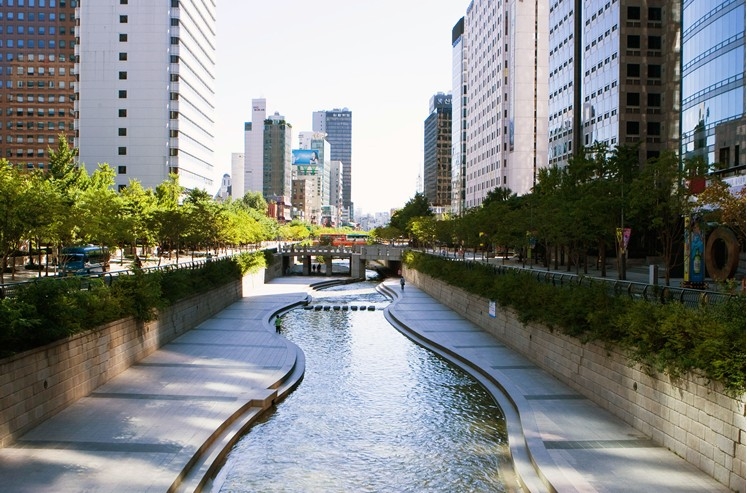Recently on The Atlantic Cities site, an article examined the case of Seoul, South Korea, and its success tearing out what the author (a fellow at an urban planning nonprofit) refers to as an “apple-corer” highway. Our own Peter Simek also wrote about Seoul, along with a few other cities that’ve undertaken similar projects, in the May issue of D Magazine.
One portion in particular of the Atlantic piece struck me because it underlines the reasons that proponents of tearing down Interstate 345 aren’t discouraged when opponents swear that the idea is a non-starter because of one simple fact: 200,000 drivers traverse that connecter highway on the east side of downtown. Surely you can’t remove a road that so many people drive. Except, yes, you can. For a few reasons:
First of all, traffic is not some sort of fixed volume. People drive cars, and if a highway isn’t there, they may take a bus or bicycle to work. They may telecommute, or they may sell their suburban home and move to the city. There is no set number of driver, for which you build roads.
Secondly, big apple-corer highways decrease mobility as much as or more than they increase it. The limited access highway usually cuts across a grid-style street layout, sealing off surface avenues like a blowtorch cauterizing veins. Tearing down a big-city highway may actually improve traffic because it gives designers a chance to break open surface streets and restore overall circulation.
Finally, American cities are in the midst of a cultural shift away from the traditional love of cars. As detailed in a recent report by U.S. PIRG, Americans are driving fewer and fewer miles per capita every year. Even more significantly, getting a license is less of a rite of passage for young people. Instead, many are romanticizing the city and its urban ferment. When was the last time you saw a television show that portrayed the suburbs non-sarcastically?
I looked at that U.S. Public Interest Research Group study to see if the conventional belief that we Texans love our cars makes our state an outlier among the national trend. But, in fact, Texas is no different than the rest of the country in having seen vehicle miles per capita decline significantly. After peaking in 2000, it’s moved downward. Between 2005 and 2011, the number fell by 10.1%.
So 10, 20, 30 years from now — as Dallas moves towards denser inner-city development, DART (hopefully) expands public transportation options, and an increasing number of jobs involves telecommuting — it’s easy to imagine that demand for highways dropping further.






